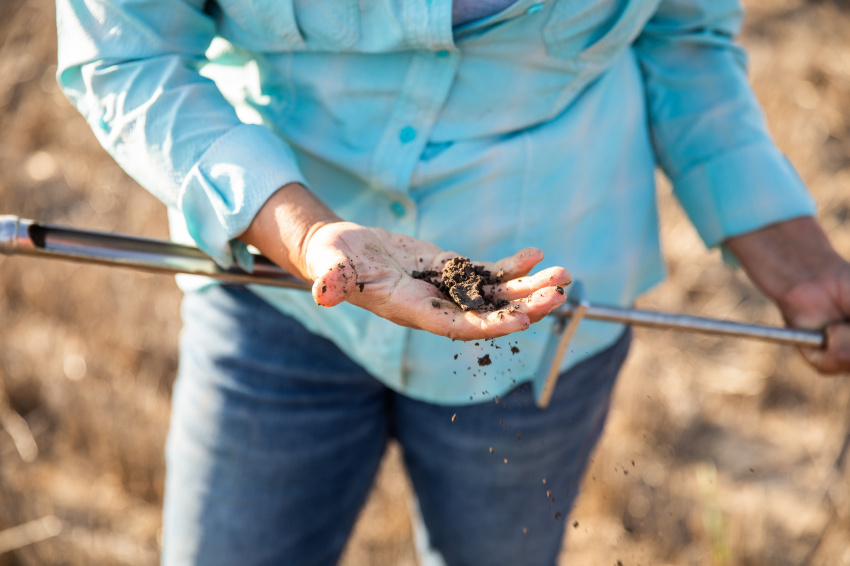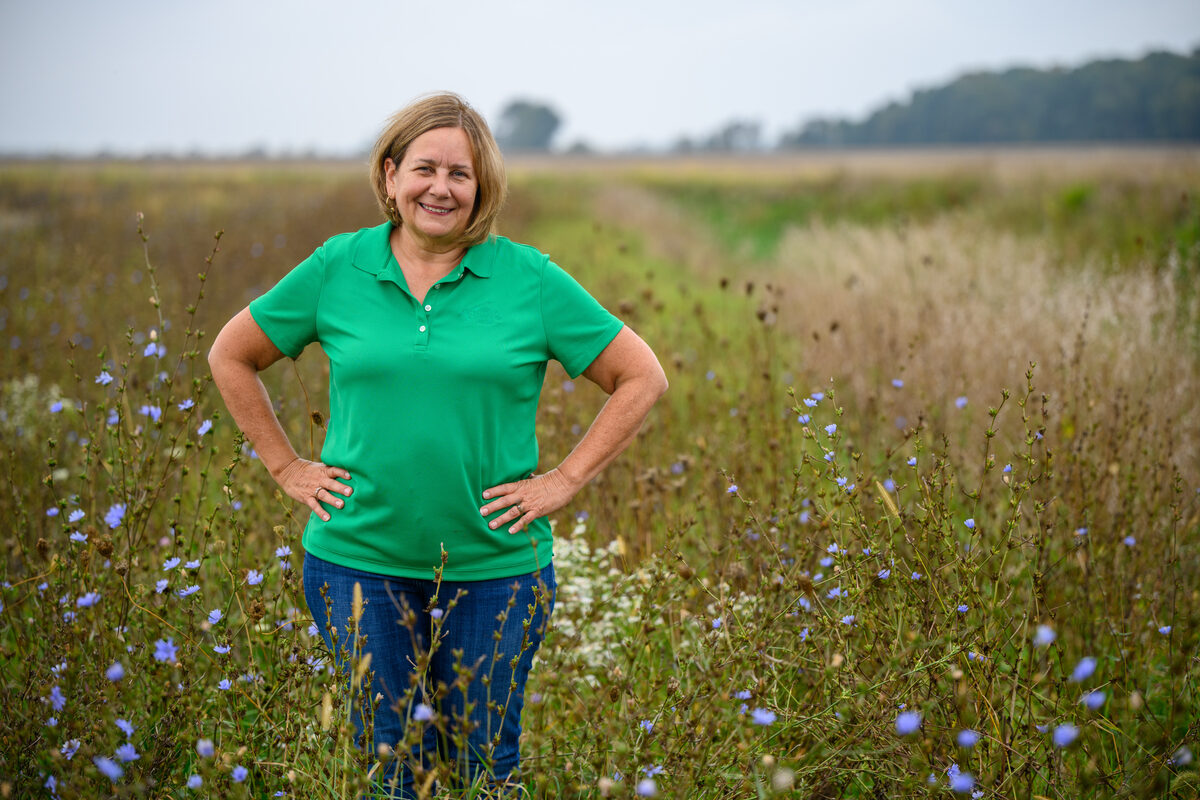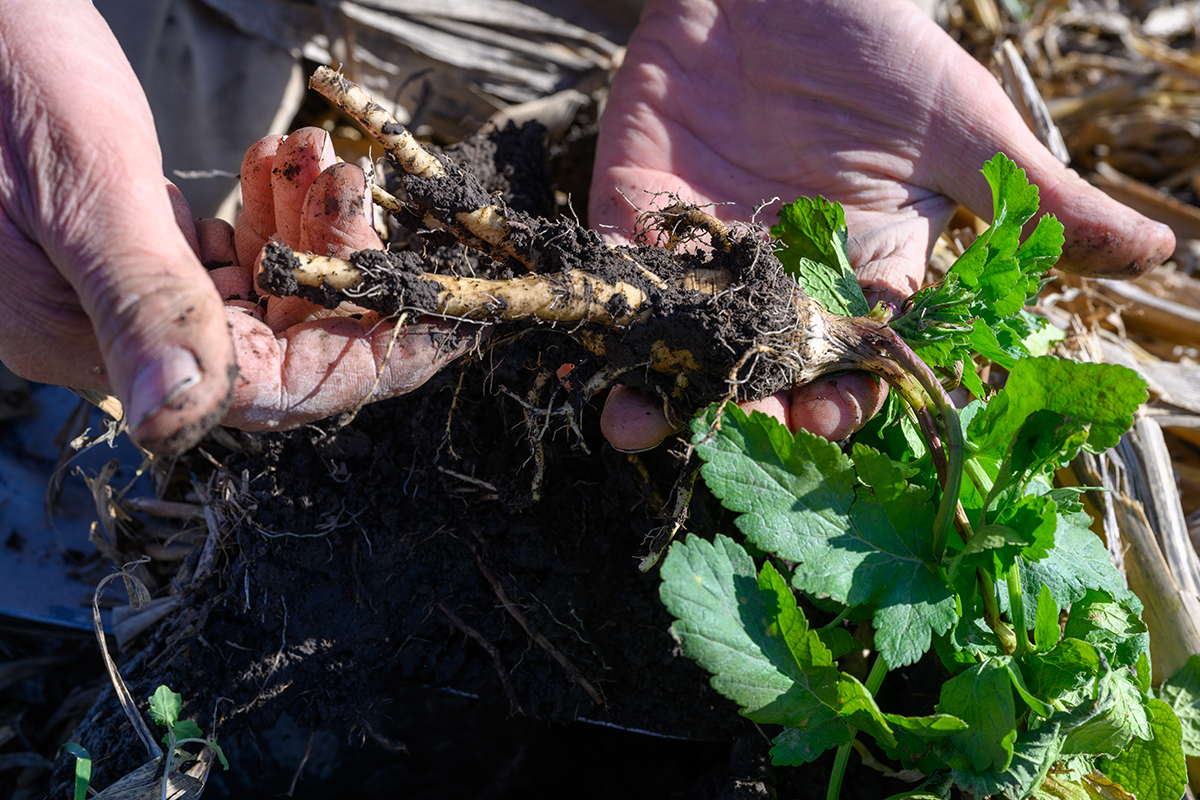A Conversation with an Agronomic Adviser on Improving Soil Health

Generations of farmers have known it long before sustainability became a hot topic — you might even call it old as dirt — that healthy soil equals a healthy crop.
But having healthy soil isn’t simple. Larry Heatherly, agronomic adviser and retired USDA-ARS research agronomist, said there are four major factors that make for healthy, productive — and sustainable — soils: microbes, carbon, drainage and structure.
1. Feeding soil microbes
Heatherly said one of the most crucial aspects of soil health is ensuring soil microbes are healthy and active. Farmers can get an idea of soil microbial activity and soil fertility potential through regular soil tests.
“We want to make sure we are feeding the beneficial microbes in the soil, and not the ones that attack crop plants,” he said. “But, since we can’t see below the ground and we depend on tests that give us an indication of what’s below, we need to be careful that we use good data and research to enhance soil microbes.”
Soy checkoff farmer-leader Meagan Kaiser agreed.
“Microbial activity is one of the keys to soil health and fertility. As farmers, we need to make thoughtful considerations to improve microbial activity and soil health,” said Kaiser. “On our farm, we closely monitor our precision soil sample results, looking at base saturation balance to ensure we have the right structure to build a home for the microbes, along with air and water holding capacity. We also closely monitor the Humus Organic Matter to see how our practices are encouraging the microbial life and improving nutrient turnover in the soil.”
The soy checkoff has invested in research to better understand various soil microbes, including which microbes may be likely to cause high- or low-yielding soybeans. Research like this can lead to more profit opportunities for farmers by reducing input costs and increasing value.
2. Enhancing soil carbon
Cover crops can offer improvements in plant and soil health, soil erosion and water quality. They can also help reduce nutrient loss — which is crucial for microbial activity.
“You can look at cover crops from two angles: the first is to suppress weeds, so we don’t have as much dependence on herbicides, and the other is to provide a highly carbonaceous material that will support and sustain microbial growth,” Heatherly said.
Over the years, soy checkoff investments have enabled research on cover crops in multiple regions. Researchers assessed how cover crops impact soil health, and the ideal seeding mixes for biomass production and increased yield. Cover crops can also sequester carbon, a greenhouse gas, from the atmosphere, helping end users meet their supply chain sustainability goals.
3. Improving soil drainage
“Drainage helps ensure the soil has aerobic rather than anaerobic conditions,” Heatherly said. “If you have anaerobic conditions, you have little to no soil oxygen, and aerobic microbes need oxygen. A properly drained soil can provide a proper aerobic environment for certain microbes.”
Controlled drainage systems, such as tiling or ditches, can also help reduce the loss of crucial nutrients, such as phosphorus and nitrogen.
Checkoff investments examining how systems like tiling can positively affect overall soil and crop health revealed that controlled drainage helps reduce runoff and erosion, contributing to clean water.
4. Maintaining soil structure
“Using certain tillage practices on your fields can severely disrupt the soil habitat, which includes earthworms, microbials and organic material,” Heatherly said.
In contrast, no-till, reduced or conservation tillage practices maintain soil structure for the microbes in the soil and leave crop residue on top of the soil. Conservation tillage and no-till can reduce soil erosion, which improves water quality — and they can also reduce fuel and equipment use.
“There will always be pros and cons to any ag practice; it’s a balance,” Heatherly said. “With any of these practices, we can enhance the soil environment, but we have to be absolutely sure that our pros outweigh our cons.”
The end result of any soil enhancement practice should be to ensure that the soil microbial population is sustained or even enhanced.
Kaiser believes soil is the greatest asset on her farm in Missouri.
“We’re committed to raising crops that thrive on a farm that’s thriving, too,” Kaiser said. “And for us, that starts with taking care of our soil. As we improve our soil, we care for our environment and supply a host of sustainable products for our customers around the world.”



